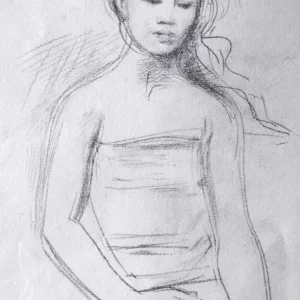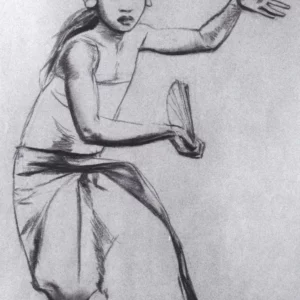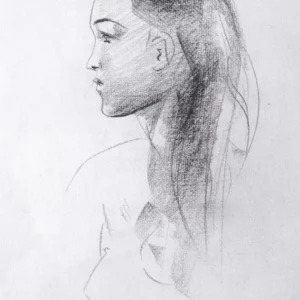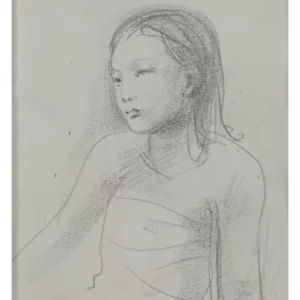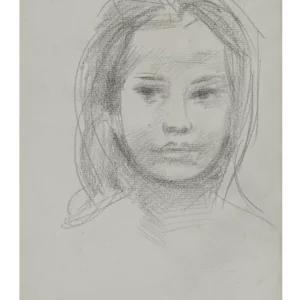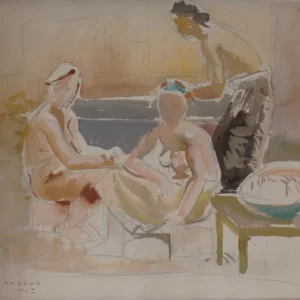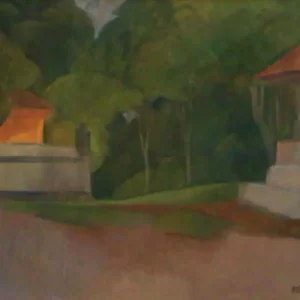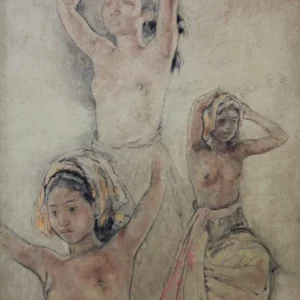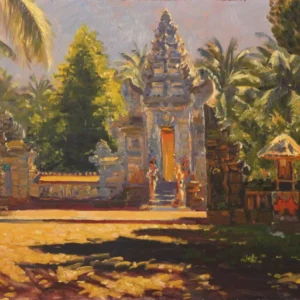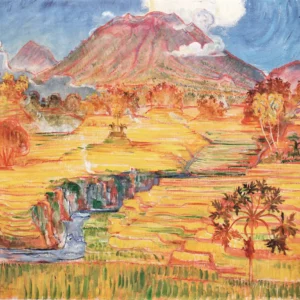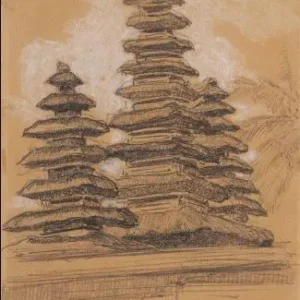Being an Italian Jew, the late 1930s in Europe were uncertain and dangerous times for Emilio. Hitler had formed a pact with Mussolini and the Fascists were on the rise – burning books, shutting down newspapers and marching bellicosely in the streets. The continent was becoming increasingly oppressive, the specter of war loomed. Coincidental encounters the young painter’s life. In an bookstore in Basel, Emilio came across Dr. Gregor Krause’s 1920 book, Land und Folk, whose powerful and exotic photographs brought Bali to the attention of the entire world. With his sister Gilda, he booked passage on a ship to Batavia and, in December 1938, they disembarked at Singaraja in north Bali. He quickly wrote home that the island was “infested with tourists.” His legacy? As is evidence by the vast number of nudes he produced, he obviously loved the sensuality of the female form and believed that the Balinese woman was the essence of the Eastern Beauty. Emilio’s genius was his ability to capture a subject or likeness with just a few bold strokes. This quest for the perfect line, that knew no fear or hesitation, he called “a line without regret.” It is the painter’s equivalent of the photographer’s “decisive moment,” first discovered by Cartier Bresson. Eager more for the recognition than the money, Emilio may have felt an acute injustice that his works in pencil, charcoal, watercolor, oil, bronze and marble were not included in this illustrious group. Independently wealthy, he never had to sell his art to make a living and thus had no need to make compromises to reach a broader public. All his life he stuck to his own style, his own artistic philosophy.
Showing all 6 results


